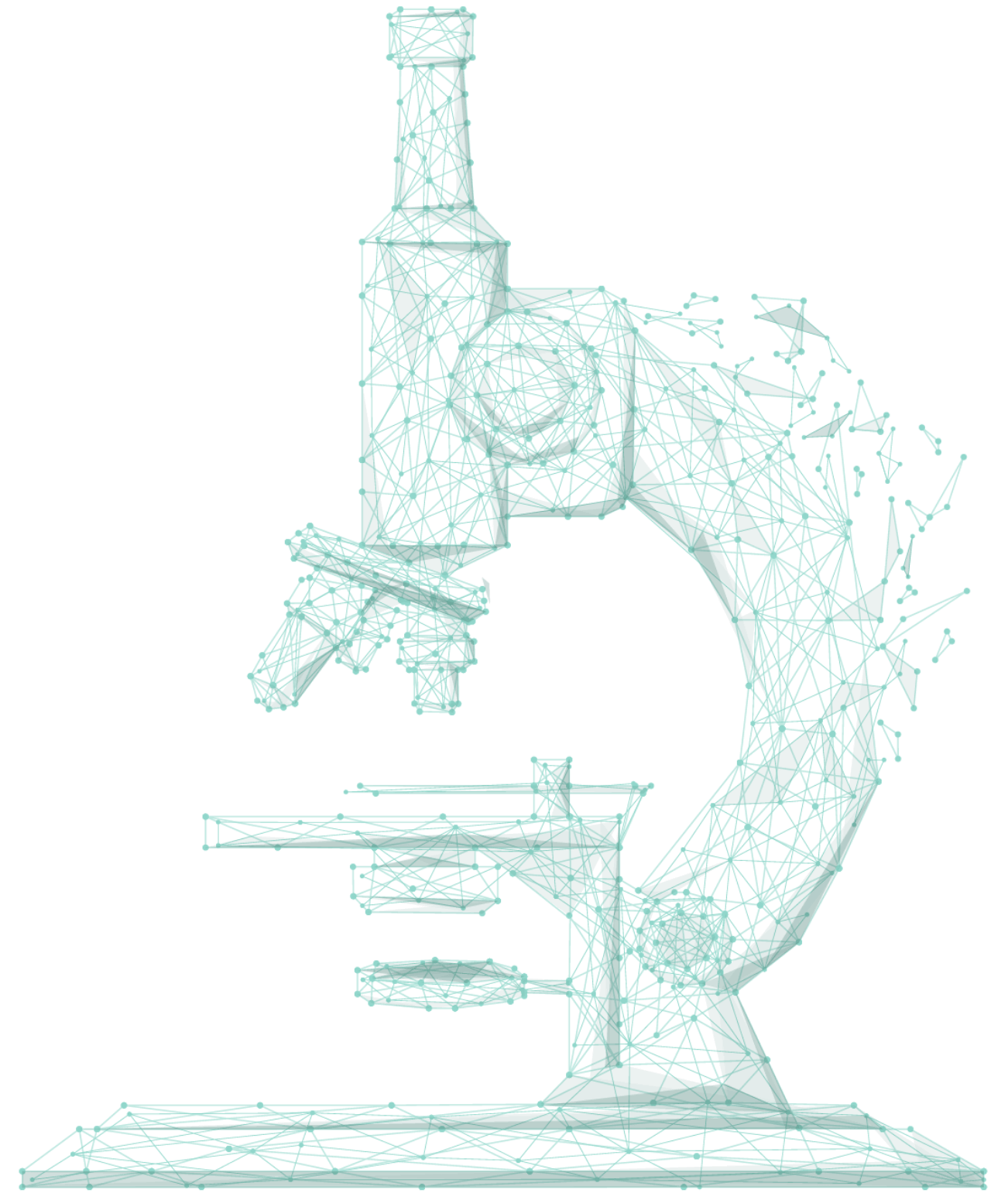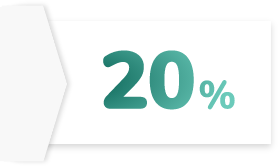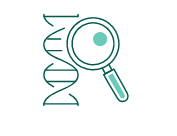
We detect, determine and prevent genetic diseases
We detect, determine and prevent genetic diseases

When used in gamete donor programs, the information provided by GeneSeeker helps to avoid combinations of donors and patients associated with a high-risk of genetic disorder.
GeneSeeker covers critical regions of the genes assessed including some areas missed by alternative tests.
GeneSeeker screening is for everyone, including healthy adults.
1. Prior, Thomas W. 2008. “Carrier Screening for Spinal Muscular Atrophy.” Genetics in Medicine: Official Journal of the American College of Medical Genetics 10 (November). The American College of Medical Genetics: 840
2. Committee Opinion No. 690 Summary: Carrier Screening in the Age of Genomic Medicine.” 2017. Obstetrics and Gynecology 129 (3): 595–96.



(*) Kingsmore S. PLOS Currents Evidence on Genomic Tests. 2012 May 2. Edition 1. doi: 10.1371/4f9877ab8ffa9.
(**) According to the World Health Organisation (OMS)
http://www.who.int/genomics/public/geneticdiseases/en/index2.html
The test is carried out on DNA obtained from blood samples from the couple (man and woman or IVF patient and sperm/egg donor). Results are provided 25 working days later. Most couples at high risk of having a child affected by a serious inherited condition are identified.
We detect, determine and prevent genetic diseases
When a mutation is detected in the same gene for both members of a couple, there is an increased risk of them having a child affected by a genetic disorder.
In such cases, the options for conceiving a child who is not affected by the inherited disease include:
Couples can consider gamete donation from a donor who does not carry a mutation in the same gene as the male or female partner.
If you and your partner are carriers of the same conditions, there are important steps you can consider, together with your Doctor.
Prior to an assisted reproduction treatment: It is advised to screen for mutations using the GeneSeeker test in order to know whether there is an increased risk of inherited disease. This allows a reproductive strategy to be chosen that reduces any risk identified.
Prior to a treatment using donor eggs or semen: GeneSeeker is used to select a donor who is not a carrier of a mutation in the same gene as the member of the couple who is providing their own gametes (eggs or sperm), greatly reducing the risk of a child affected by an inherited disorder.
Before trying to become pregnant naturally: For any couple who are planning on starting a family, helping to reveal whether there is an increased risk of having a child with an inherited disease, and allowing plans to be made to reduce the risks.
Have a family history of a genetic disorder
Are at increased risk for a specific disorder based on ethnicity (for example, Ashkenazi Jewish populations)
Most carriers of genetic mutations are unaffected themselves and have no family history of inherited disease.

Pretest genetic counseling

Blood sample taken at the clinic and shipped to Juno Genetics

Sample arrives at the laboratory and DNA is extracted and analysed

Test report is created and shared with your doctor
Detailed screen for mutations of high frequency and impact, including:
CFTR gene
HBB gene
HBA1/HBA2 genes
SMN1 gene
CYP21A2 gene
Screening of genes with common mutations in the population, including:
CFTR gene
HBB gene
SMN1 gene
HBA1/HBA2 genes
The GeneSeeker test from Juno Genetics provides a powerful and exclusive computerized tool, called GeneSeeker Match. This software allows egg and sperm banks to genetically match gametes with individual recipients, avoiding combinations that have a high risk of producing a child with an inherited disorder.
This unique system provides the clinic with the opportunity to make a bank available which has been pre-screened for more than 200 genetic disorders, eliminating the vast majority of inherited disease risk.
A bank which is not genetically tested, uses eggs with a high risk of passing on a genetic disease
A bank genetically tested with the GeneSeeker test, reduces the risk of transmitting a genetic disease to:
G6PD deficiency is one of the most common forms of enzyme deficiency and is thought to affect more than 400 million people worldwide. It is X-linked inherited and affects individuals of all races and ethnicities. The highest prevalence rates are found in Africa, the Middle East, certain parts of the Mediterranean and certain areas of Asia. In these regions, the rate varies from 5% to 30% of the population.
An autosomal recessive disorder that mainly damages the respiratory system, but also the functioning of other organs such as the pancreas and liver. It is more common in people from northern Europe, where the incidence of cystic fibrosis is 1 in 3,200 live births. In Spain, it is estimated that 1 in 3,750 individuals suffer from the disease and the frequency of Caucasian carriers is 1 in 25 people.
This is a genodermatosis or genetic disease mainly affecting the skin; its principal manifestations are the presence of café-au-lait spots, as well as a predisposition to the development of tumours. These are usually non-cancerous (i.e. they are usually benign), although they can sometimes become malignant. Neurofibromatosis is usually diagnosed in childhood or early adulthood, and its incidence is 1 in 3,500-3,000 live newborns. In 2001, it was estimated that 13,000 people had this pathology in Spain.
this pathology is characterised by dilatation and impaired contraction of one or both ventricles of the heart. Patients usually develop congestive heart failure, which is often progressive. Arrhythmias, thromboembolism and even sudden death are common. The estimated prevalence of familial dilated cardiomyopathy is 1 in 2,500 people. It should be noted that approximately half of the cases are familial and in 40% of these, the diagnosis is genetic in origin.
Is a genetic disease caused by an alteration in chromosome 15, and it affects the proteins that form part of the connective tissue. It affects both men and women equally and, due to its autosomal dominant pattern, the probability of a patient’s children inheriting the disease is around 50%. The incidence of this syndrome is 1 in 3,000 to 5,000 people.
In addition to those described, other common inherited genetic diseases include Achondroplasia or Noonan Syndrome.
Genetic tests, such as GeneSeeker, analyze genes, which are chemical instructions encoded in our DNA. The genes are the blueprints for building our bodies and maintaining the health of our cells, tissues and organs. Genetic testing looks for variations in your genes (mutations) that can cause genes to stop working properly, potentially lead to disease. There are various reasons why you or your healthcare provider might consider genetic testing, such as assessing the risk of you and your partner having a child affected by an inherited disorder, or to determine the cause of an inherited condition that runs in your family.
It has been estimated that everyone carriers 3‐5 genetic mutations but in most cases these do not cause a disease. This is because we each have two copies of every gene (with the exception of genes on the X-chromosome in men). The GeneSeeker test looks at variations in the DNA which are ‘recessive’, meaning that they only cause a disease when both copies of the gene have a mutation. If you have a recessive mutation in one copy of a gene, stopping it from working properly, the other (normal) copy is sufficient to prevent the disease. However, if your partner carries a mutation in the same gene, then there is a risk that a future child could receive a defective copy from each of you, leaving them with no functioning copies of the gene, and causing them to develop an inherited disorder.
Most carriers of recessive gene mutations have no family history of inherited disease. Such disorders can remain hidden in families for hundreds of years before suddenly and unexpectedly reappearing. We are all carriers of recessive mutations, but we do not realise it because we have two copies of each of our genes (with the exception of X-chromosome genes in males). Having one defective copy is not sufficient to cause disease. To have a recessive inherited disease both copies of the gene must be knocked out by mutation. GeneSeeker can look for hidden recessive mutations carried by you and your partner and identify whether you have any in the same gene. In such cases, there is a risk that you could each pass a defective copy of the gene to a future child, meaning that they would have no functional copy of the gene and would develop an inherited disorder.
